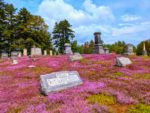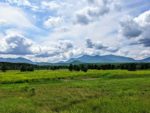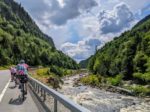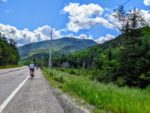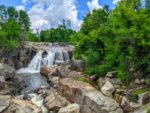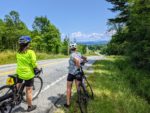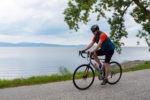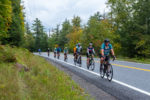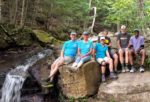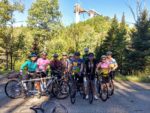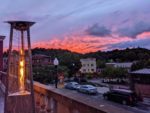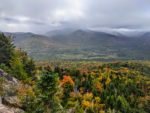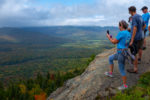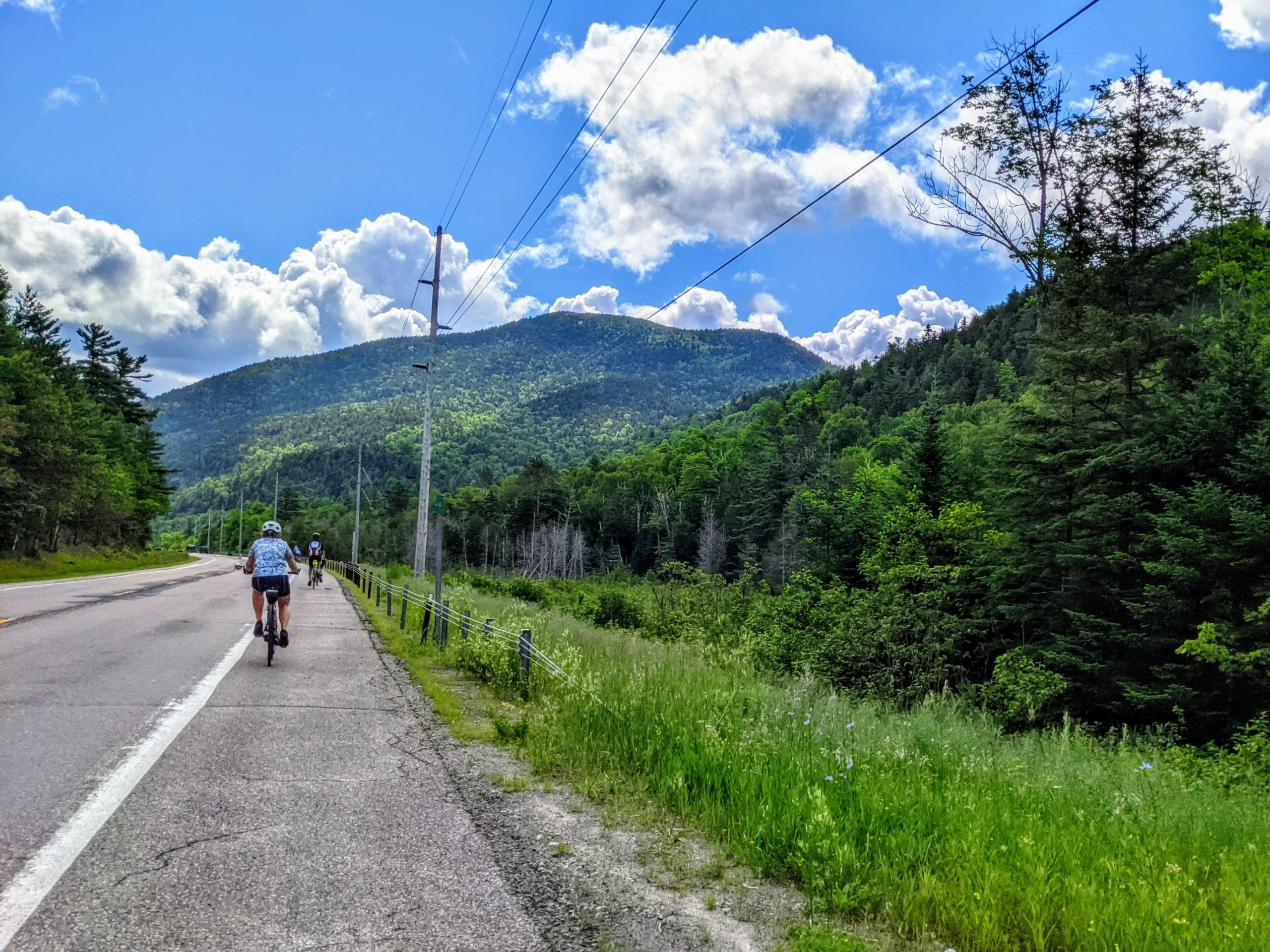
Cycling Through Adirondack History
Our route through New York’s Adirondack mountains (and a wee little bit of Vermont’s Lake Champlain shoreline), gives an excellent representation of what this region has to offer. Our routes cruise up and down scenic mountain roads, mostly with little traffic.
Beyond the breathtaking vistas and exhilarating mountain air, the Adirondacks are also rich in historical significance. Around each bend in the road, you’ll cycle past hallowed battle grounds, explore impressive Adirondack architecture, and escape to historic lodges and hotels.
The Adirondacks were originally claimed by two Indian nations, the Iroquois and the Algonquins. Neither group ever settled in the region, but the two nations fought over the Lake George – Lake Champlain water route through the Adirondacks.
Dating back to the 1700’s the Adirondacks were a popular destination, with Lake George and Lake Champlain providing ideal conditions for settlements and military posts. In the late 19th century, the Adirondacks became a popular vacation destination for wealthy urbanites looking to escape city smog. The last 250 years in the Adirondacks have produced a bounty of historic intrigue, from Revolutionary battles to Olympic feats in the heart of New York’s high mountain ranges.
Some historical highlights in the Adirondacks…
Morgan Horse Farm
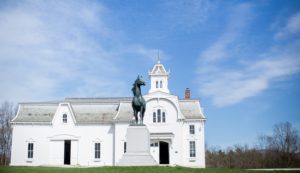
The UVM Morgan Horse Farm is the oldest continuous Morgan horse breeding program in the world, having called this historic farm home since 1878.
In the 19th century, Morgans were used for everything — harness racing, pulling coaches, light driving work and general riding. Even miners in the California Gold Rush (1848–1855) used the breed, as did the Army during and after the American Civil War.
But longer-legged horses came into fashion by 1870, and Morgan horses were crossed with leggier breeds. The original Morgan nearly disappeared until Colonel Joseph Battell, a Middlebury native, published the first volume of the Morgan Horse Register in 1894.
Battell also donated a large piece of land to the USDA, on which the United States Morgan Horse Farm was established. In 1951, the Morgan Horse Farm was transferred from the USDA to the Vermont Agricultural College (now the University of Vermont).
Ticonderoga, New York
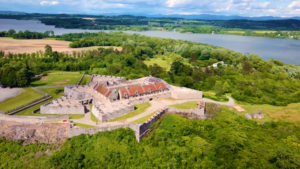
The site controlled a river portage alongside the mouth of the rapids-infested La Chute River, in the 3.5 miles between Lake Champlain and Lake George. It was placed here because there was competition over trade routes between the British-controlled Hudson River Valley and the French-controlled Saint Lawrence River Valley. The waterways were the only logical transportation routes, as the Appalachian Mountains made it nearly impossible to transport goods over land.
The fort, originally called Fort Carillon, was named Ticonderoga when the British overtook it from the French. The name “Ticonderoga” comes from the Iroquois word tekontaró:ken, meaning “it is at the junction of two waterways.”
During the Revolutionary War, the British controlled the fort. But on May 10, 1775 the Green Mountain Boys and other militia led by Ethan Allen and Benedict Arnold captured it in a surprise attack. During the following icy winter, troops dragged, rolled and floated cannons from the fort all the way to Boston in order to lift the British siege in March of 1776.
(On the bike tour, we pass by the fort on a Monday. After Covid, Fort Ticonderoga changed its hours to be closed on Mondays, so we recommend you take a day before or after the tour to visit this historic site!)
Adirondack Park
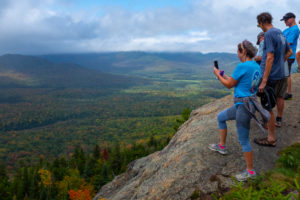
Created in 1892 as one of the first Forever Wild Forest Preserves in the nation, the Adirondack Park is a unique wilderness area. At 6 million acres, it is the largest publicly protected area in the contiguous United States. It’s also the largest National Historic Landmark, covering an area larger than Yellowstone, Yosemite, Grand Canyon, Glacier, and the Great Smokies National Parks combined.
But Adirondack Park isn’t a national or a state park. About half the acreage of the park belongs to New York State and protected to remain “forever wild.” The remaining half is private land that includes farms, businesses and homes.
As we ride around Saranac Lake and Lake Placid, we’ll be in the High Peaks region. This area holds the 46 high mountain peaks in the Adirondack Mountains. All except three are located in central and northern Essex County, primarily south of Lake Placid and Keene Valley.
This biologically diverse region contains many alpine lakes and meadows, wetlands, streams, and forests. Atop the highest peaks, above the tree line, there is a total of 87 acres (35 ha) of extraordinarily fragile alpine ecosystem.
Hotel Saranac
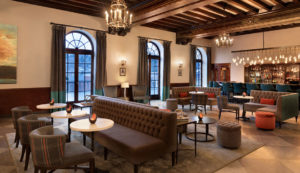
Built in the Roaring Twenties to host that era’s most notable movers and shakers in refined style, Hotel Saranac has been completely refreshed for the modern guest – all while keeping true to its Adirondack heritage.
In the early 1800s, the village of Saranac Lake was settled for the first time by non-natives as a remote camp for guides and lumbermen. The village didn’t become popular late in the century when Dr. Edward Livingston Trudeau sparked the development of the sanatorium village, resulting in Saranac Lake becoming a leader in the healthcare industry and scientific research. The Adirondack Railroad soon connected the town to New York City, and electricity illuminated the streets soon after. The iconic Hotel Saranac was opened in 1927.
Envisioned by the owner as a “true city hotel” equipped with modern innovations such as private baths for every one of its rooms, the Hotel Saranac opens on July 1, 1927. The first advertisement touts “modern, fireproof, 100 rooms, 100 baths, no invalids, European plan.” Today, the hotel has been restored to its former glory, complete with an expansive ballroom, a comfortable restaurant, a spa and a gift shop where you can bring home part of the Adirondacks.
Hotel Saranac is a member of Historic Hotels of America, the official program of the National Trust for Historic Preservation for recognizing and celebrating the finest historic hotels across America.
Lake Placid
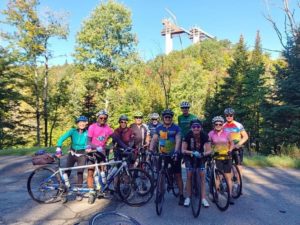
The small town of Lake Placid is a treasure trove of sports history. The internationally famous Ironman Lake Placid comes through the area on its 112-mile course each July. (We’ll ride the cycling loop for the wonderful scenery, taking plenty time to enjoy the mountains).
Lake Placid is also famous for its winter Olympic sites. Originally constructed for the 1932 Winter Olympics, and further built upon for the 1980 Winter Olympics, the Lake Placid Legacy Sites have since evolved into four distinct locations: Olympic Center, Olympic Jumping Complex (pictured here!), Mt. Van Hoevenberg, and Whiteface Mountain.
Most notably, Lake Placid was the site of the “Miracle on Ice,” in which the U.S. ice hockey team defeated the powerful Soviets, the dominant team in international hockey over the previous decade and Olympic champions since 1964, en route to winning the gold medal.
As of this year (2021), many of these sites are being renovated to prepare for the 2023 World University Games, to add new unique experiences for both residents and visitors, and to continue the Olympic legacy to be enjoyed by generations to come.
The New York Adirondack region is a national treasure. Our tour aims to get you as deep into the mountains as possible on a bike, but there’s always more to explore! Want more information on this scenic, historic tour of New York’s Adirondacks? Check out the Adirondacks bike tour page, or call us at 800-272-4141!


